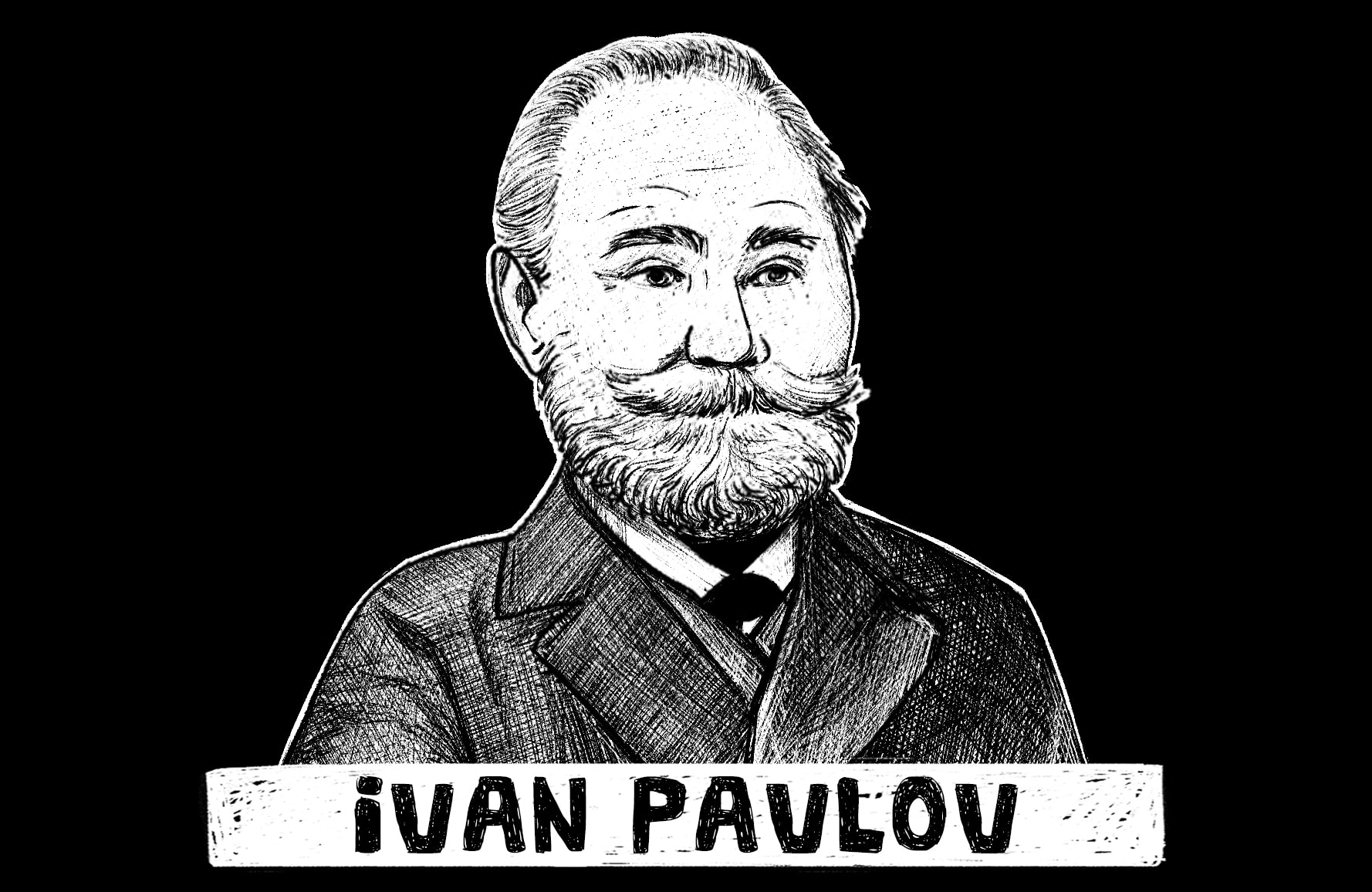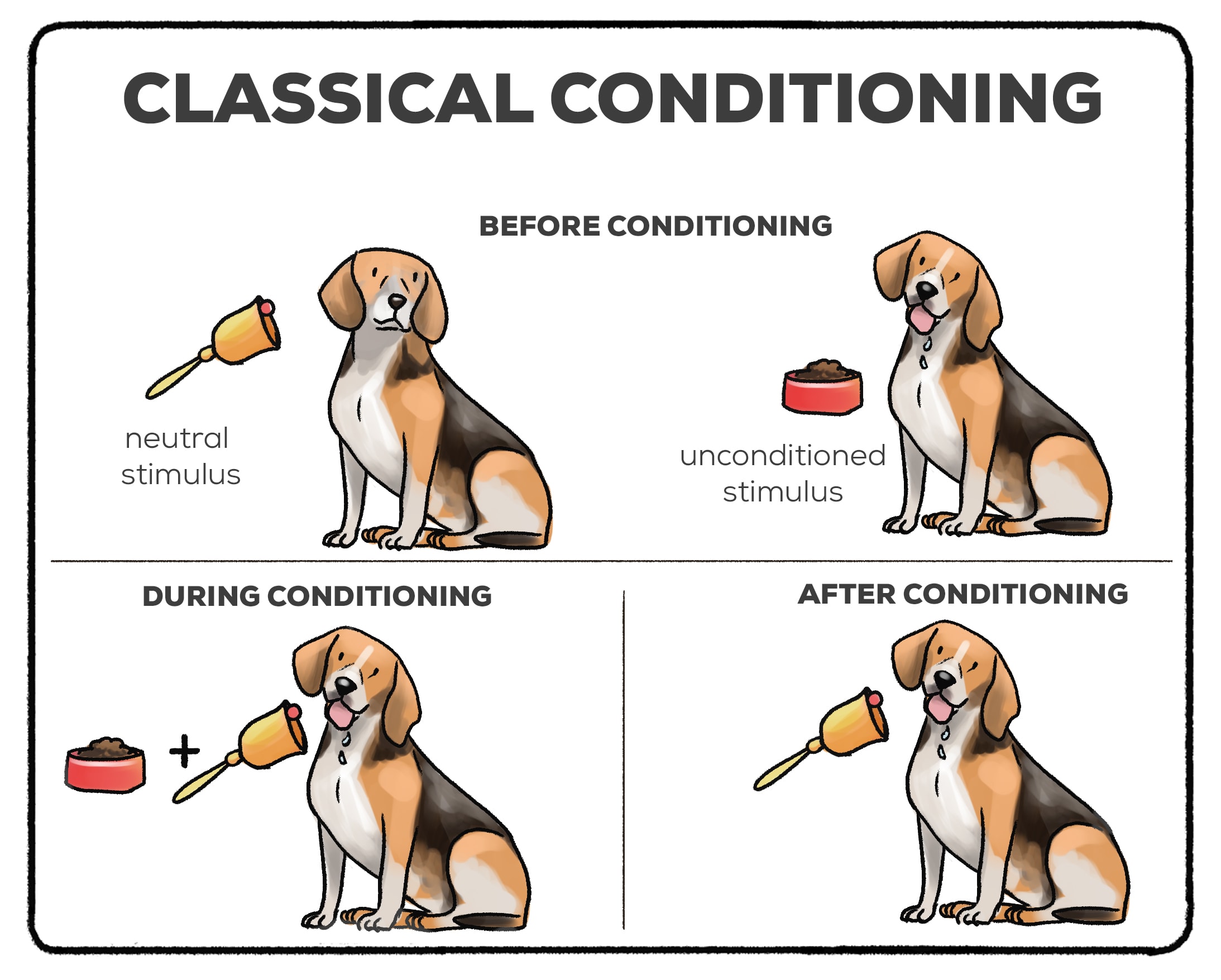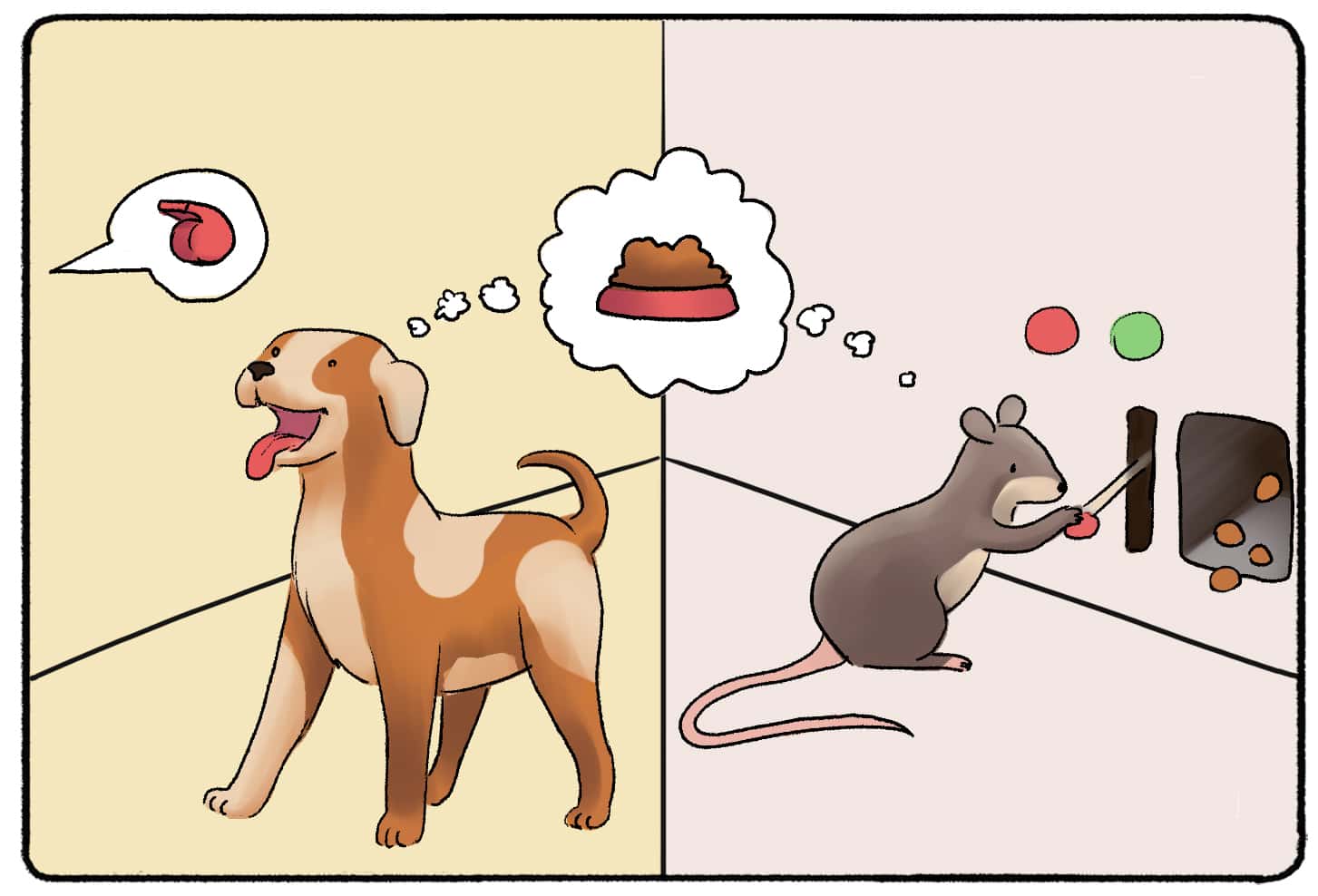When most people think of Ivan Pavlov two thoughts readily come to mind. The first is Pavlov was an amazing psychologist. The second is he worked with dogs. But although Pavlov did some incredible work with dogs and made major contributions to the field of psychology, the truth is he was not a psychologist at all. So, who exactly was he?

Who Is Ivan Pavlov?
Ivan Petrovich Pavlov was a Russian physiologist who is best known for discovering the concept of classical conditioning. He was born on September 14, 1849, in Ryazan, Russia. Pavlov won the Nobel Prize for Physiology or Medicine in 1904. He died in Leningrad on February 27, 1936.
His Early Years
Ivan Pavlov was the eldest child of Varvara Ivanovna Uspenskaya and Peter Dmitrievich Pavlov. He had ten siblings. Pavlov’s mother was a homemaker and his father was a Russian Orthodox priest at the village church. His grandfather also worked at the church as a sexton.
Pavlov was a good reader by the time he was seven years old. However, he was seriously hurt when he fell from a high wall during his childhood. His injuries caused him to spend most of his early years at home and in his family garden. During this part of his life, Pavlov grew to love nature, gardening, and working with his hands.
As the years passed, Pavlov’s body slowly began to heal. He was eleven years old when he started classes at the Ryazan church school.
What did Ivan Pavlov Study?
After Pavlov completed his classes at the local church school, he enrolled at the seminary in Ryazan. He was immediately impressed by his teachers’ desire to share religious knowledge with him. But despite growing up in a religious household, Pavlov struggled to accept religion. He soon began to wonder if studying theology was right for him.
While at the seminary Pavlov became inspired by the ideas of Dmitry Pisarev—a radical Russian writer and social critic, and Ivan M. Sechenov—a prominent Russian physiologist. Their progressive ideas convinced Pavlov to drop his religious studies at the seminary and devote his life to science. Unsurprisingly, Pavlov's father was furious when he found out. However, Pavlov was determined to live his life the way he wanted.
University of St. Petersburg
In 1870, Pavlov was accepted at the University of St. Petersburg. He enrolled in the physics and mathematics department because he wanted to study natural science. Pavlov spent much of his time studying chemistry and physiology. His first-year chemistry professor was Dmitri Mendeleev, the man who invented the periodic table of elements.
During his first research course in natural science, Pavlov and another student named Afanasyev published a research paper on the physiology of pancreatic nerves. They received much praise and were awarded a gold medal for their work. Overall, Pavlov's grades at the University of St. Petersburg were excellent. He completed his degree in natural science in 1875.
Pavlov's passion for physiology motivated him to continue his studies at the Imperial Academy of Medical Surgery. While there, he worked as an assistant to his former teacher Elias von Cyon—a Russian-French physiologist. However, von Cyon was forced to relocate to Paris when students protested his political views. When von Cyon was replaced by another instructor, Pavlov quit the department.
Pavlov spent two years as an assistant at the physiological department of the Veterinary Institute. During that time he worked on his medical dissertation on the circulatory system. In 1878, Pavlov was offered the position of director of the Physiological Laboratory at Sergey Botkin’s clinic. Botkin was a famous clinician and therapist at the time and was later regarded as one of the pillars of modern medical science in Russia.
Pavlov graduated from the Academy in 1879. At his graduation, he was awarded another gold medal for his outstanding research. He also won a fellowship at the Academy. This fellowship and his role at the Botkin Clinic allowed him to continue his research until he completed his dissertation on The Centrifugal Nerves of the Heart in 1883.
Work with Carl Ludwig
In 1884, Pavlov went abroad to continue his studies. First, he worked under the supervision of Carl Ludwig—a well known cardiovascular physiologist—in Leipzig, Germany. He then went to Breslau, Poland to assist renowned physiologist Rudolf Heidenhain in his study of digestion in dogs. After his studies were complete, Pavlov returned to Russia in 1886.
Pavlov accepted the role of professor of Pharmacology at the Military Medical Academy (formerly called the Imperial Academy of Medical Surgery) in 1890. Less than one year later, he was also invited to serve as the head of the Physiology Department at the Institute of Experimental Medicine. Pavlov was appointed to the Chair of Physiology at the Military Medical Academy in 1895—a role he occupied for 30 years. However, most of his research on the physiology of digestion was conducted at the Institute of Experimental Medicine, where he worked for 45 years.
Pavlov's Dog Experiment
The bulk of Pavlov’s research was conducted from 1891 to the early 1900s. In 1902 he was researching how dogs salivated in response to being fed. To measure the amount of saliva produced, he surgically implanted a small tube into the cheek of each dog. His prediction was that salivation would begin only after the food was placed in front of the dogs.
However, Pavlov soon noticed something quite interesting. At first, the dogs salivated only if they were presented with food. But later in the experiment, the dogs began salivating when they heard Pavlov’s assistant coming with their food. Were the dogs producing more saliva because they could smell the food as it was brought closer? Apparently not, because the dogs still salivated even when Pavlov’s assistant came empty-handed.
Pavlov was fascinated by these results. It did not take him long to figure out that other objects or events would trigger the same salivation response if the dogs associated those objects or events with food. Pavlov immediately realized he had made an important scientific discovery. He spent the rest of his professional life studying this type of learning.
Discovering Pavlovian Conditioning
Pavlovian conditioning (also called classical conditioning) refers to the process of learning through association. It was first documented by Ivan Pavlov in 1902 when he was researching digestion in dogs. Although he was a brilliant man, Pavlov made this discovery quite by accident. Nevertheless, classical conditioning went on to have a major influence in the field of psychology.
Pavlovian conditioning assumes there are some behaviors that humans and animals do not need to learn. Instead, the response or reflex occurs naturally whenever it is triggered. In Pavlov’s case, the dogs salivated (unconditioned reflex) when they were presented with food (unconditioned stimulus). In this case, the stimulus and reflex are described as “unconditioned” because the reaction is hard-wired into the dogs and required no learning.
However, Pavlov knew that the dogs did learn new things as the experiment went on. He came to this conclusion because initially, the dogs only salivated when they were given food. At the start of the experiment they did not salivate when they heard the footsteps of his assistant. The fact that the dogs later started to salivate when they heard the footsteps shows they had learned to associate Pavlov’s assistant with the food they desired.
Stimuli in Classical Conditioning
Pavlov's lab assistant can be thought of as a “neutral stimulus” at the beginning of the experiment. This is because his presence caused no response from the dogs. As the experiment went on, the dogs linked the lab assistant (neutral stimulus) with food (unconditioned stimulus). After the association was formed, the dogs began salivating whenever they heard the assistant’s footsteps.
If the dogs could learn to associate his assistant with food, Pavlov believed they could learn to associate other things with food. To test if his belief was correct, he decided to use a metronome as his neutral stimulus. A metronome is a device that produces a click or tone at regular intervals.
Under normal circumstances, dogs do not salivate when they hear a tone. But if the tone was successfully linked with food, Pavlov believed the dogs would salivate each time they heard it.

How Did Pavlov's Dog Experiments Work?
So Pavlov started to play the tone before he fed his dogs. He repeated the process for days. After some time had passed, he played the tone without presenting any food to the dogs. As he expected, his dogs showed an increase in salivation whenever they heard the tone.
Although the dogs had no response to the tone at the start of the experiment, they had learned a new response by the end of it. And as this response needed to be learned, Pavlov called it a “conditional reflex.” Pavlov also recognized that the tone was no longer a neutral stimulus. By linking it with food (unconditioned stimulus), the tone had become a “conditioned stimulus.”
There are many reports that Pavlov used a bell for the experiments he conducted with his dogs. And he may have used one on occasion. However, Pavlov wanted to control the intensity, quality, and duration of the stimuli. So he relied heavily on a metronome, harmonium, buzzer, and even electric shocks for most of his experiments.
There was one more thing Pavlov discovered during his experiment. He realized that the tone (initially a neutral stimulus) and the food (unconditioned stimulus) needed to be presented close together in time for the link to be made. He referred to this requirement as the law of temporal contiguity. If there is too much time between the playing of the tone and the presentation of the food, the dogs would not learn to salivate when they heard the tone.
Behaviorism Theory
Behaviorism is a theory that suggests human and animal psychology can be understood by studying observable actions. While many forms of psychology emphasize thoughts and feelings, behaviorists believe the “inner world” is not important because it cannot be seen or accurately measured. Behaviorists believe all human behavior is learned by interacting with the environment. Consequently, any person can be trained to become an expert in any task, regardless of his or her personality, culture, or genetic traits.
John B. Watson
Behaviorism was developed by American psychologist John B. Watson in 1913. He was greatly influenced by the work and observations of Ivan Pavlov. Watson believed all facets of human psychology could be explained by Pavlovian conditioning. He denied the existence of the mind, believed all humans begin as a blank slate, and claimed speech, emotional reactions, and other complex behaviors were nothing more than learned responses to environmental stimuli.

B.F. Skinner
Another prominent behaviorist who was heavily influenced by Pavlov is Burrhus Frederic Skinner. While Watson expanded on methodological behaviorism, Skinner pioneered a different approach called radical behaviorism. Skinner is widely considered to be the father of operant conditioning—a learning process that is different from classical conditioning. Skinner actually had plans to major in English and become a novelist before he was introduced to Pavlov’s work in 1927.
Although many people think Pavlov did not care about studying things that could not be measured, he never made those claims himself. In fact, he viewed the human mind as a great mystery. If scientists want to understand the human mind, the process has to begin somewhere. Pavlov believed the best approach was to begin with observation and hard data.
Pavlov's Impact on Psychology and Education
Classical conditioning has had a big impact on modern-day learning strategies. Although Pavlov worked with animals, he always believed the principles of classical conditioning can be applied to humans. A number of Pavlov’s basic ideas have been implemented in classrooms and other learning environments. Just as Pavlov used different stimuli to increase or decrease specific behaviors in his dogs, many teachers change their tools, instructions, or environment to influence the behavior of their students and increase learning.
If a teacher is faced with an ongoing problem behavior from a student, the teacher may try to eliminate or change the behavior. One way to do this is by changing something in the learning environment that triggers that specific behavior. So the teacher may move the student to a different seat, change the lights in the classroom, or close an open window if they trigger the bad behavior. The teacher may also try to change her content or modify the way it is presented in order to boost learning.
These strategies are particularly effective for teaching people with behavior problems or learning disabilities. They have been implemented in many schools, homes, and health centers around the world.
Ivan Pavlov's Accomplishments and Awards
Books
Pavlov published many research papers and lectures throughout his long professional career. Some of his more notable works have been compiled into a few books such as The Work of the Digestive Glands (1897), Conditioned Reflexes (1926), and Psychopathology and Psychiatry (1961). His biography, Pavlov: A Biography was written by Boris Babkin and published in 1949. A more recent biography, Ivan Pavlov: A Russian Life in Science, was written by Daniel P. Todes and published in 2014.
Nobel Prize
Pavlov was nominated for the Nobel Prize from 1901 to 1904. However, he did not win the prize for the first three years because his nominations were tied to a variety of findings rather than a specific discovery. When he was first nominated in 1901, he was already well known among physiologists, especially those who studied digestion. However, Pavlov's research on conditioned reflexes was not published until 1902 and it may have taken a while for this work to penetrate the field of psychology.
In 1904, Pavlov was finally awarded the Nobel Prize for Physiology or Medicine. He received the award for his outstanding research on digestion in animals. This research involved removing a dog's esophagus and creating a fistula or tunnel in a dog’s throat so that if the dog ate, the food would not enter its stomach. Pavlov would then collect and test the different secretions along the dog’s digestive system.
Although Pavlov’s methods may seem extreme by today's standards, he always did his best to keep his dogs fed and healthy. He viewed them as very valuable for his work. When his dogs eventually died, he found effective ways to get more. He would take in strays or even pay thieves to steal dogs from other people.
After Pavlov won the Nobel Prize, he drew the attention of many other scientists from around the world. American psychologists, in particular, became more aware of his work and were more willing to test his findings on conditional reflex.
Personal Life and Death
Throughout his life, Pavlov was never easy to get along with. In his childhood days, he often felt uncomfortable around his parents. He was also known to be a volatile and difficult student. When he opened his lab as an adult, his staff knew to avoid him if he was having one of his many bad days.
Ivan Pavlov Children and Wife
Ivan Pavlov met Seraphima Vasilievna Karchevskaya (also known as Sara) in 1878 or 1879. At the time, Sara was a student at the Pedagogical Institute. It did not take long for the young couple to fall in love. They were married on May 1, 1881.
When Sara became pregnant for the first time, she had a miscarriage. The couple was very careful the second time Sara conceived, and she gave birth to a healthy baby boy named Mirchik. However, Mirchik died suddenly in childhood and this made Sara very depressed. Eventually, the couple had four more children. Their names were Vladimir, Victor, Vsevolod, and Vera.
Ivan and Sara Pavlov spent their first nine years as husband and wife in poverty. Due to their financial troubles, they were often forced to live in different homes so they could benefit from the hospitality of other people. Pavlov even grew potatoes and other crops outside his lab to help make ends meet. Once their finances became stable, Ivan and Sara were able to live together in the same house.
Pavlov was eventually able to earn money from health products he made in his lab. He sold the gastric juice he collected from his dogs as an effective treatment for indigestion. Of course, winning the Nobel Prize in 1904 brought monetary rewards. However, the ever-changing political scene in Russia made life difficult for him, his family, and his fellow scientists.
Cause of Death
On February 27, 1936, Ivan Pavlov passed away in Leningrad, Russia. He was 86 years old. He died from lung issues caused by pneumonia. Ever the researcher, Pavlov asked one of his students to sit beside his bed as he died so that the experience could be properly documented.
